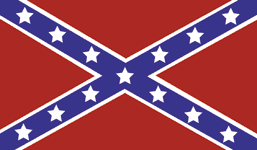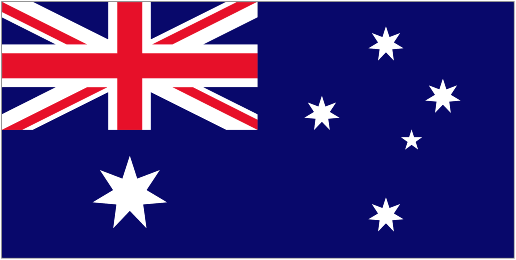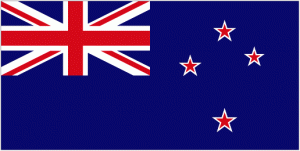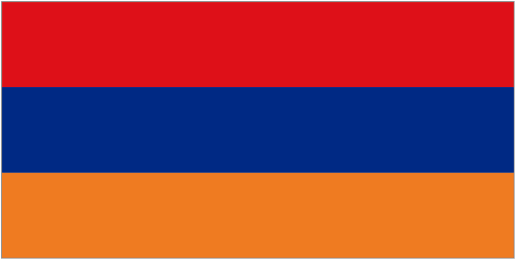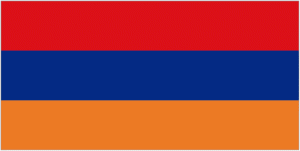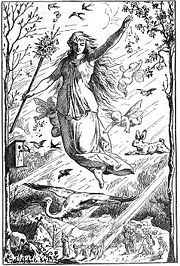April 28
Today is a National Day of Mourning in Canada. Not for those killed in wars or natural disasters, but for those who made the fatal mistake of showing up to work.
Internationally the day is known as Workers Memorial Day. The date April 28 was chosen because it’s the anniversary of Canada’s Workmen’s Compensation Act, passed in 1914, which created the predecessor of today’s Workplace Safety & Insurance Board.
A random sampling of Canadians found that most had never heard of the National Day of Mourning, an effort by the Canadian Labour Congress to spread awareness of workplace safety. However, spokesperson Terry O’Connor believes the lack of safe working conditions is a growing problem in Canada.
“Canada continues to have one of the highest workplace fatality rates of any Organization of Economic Co-operation and Development country…In 2006, the Association of Workers’ Compensation Boards of Canada reported 976 workplace fatalities in Canada, compared to 805 workplace fatalities in 1996 — an 18 per cent increase in a 10-year period.”
South of the border, the US Bureau of Labor Statistics reports that fatal accidents on the job have declined since 1994 by 14%, while the number of people in the workforce has increased by the same amount. The most dangerous jobs in North America?
- 10. Agricultural workers
- 9. Truck Drivers/Drivers
- 8. Roofers
- 7. Electrical power line repairers
- 6. Farmers & Ranchers
- 5. Refuse collectors/recyclers
- 4. Steel workers
- 3. Loggers
- 2. Pilots
- And #1?
Fishermen.
Yes, that crab you bite into comes a steep price, and we’re not just talking money. The occupational-fatality rate for commercial fishing is over 20 times the national average.
17 Minutes That Changed America
Overall North American working conditions have greatly improved since Upton Sinclair wrote his scathing look at America’s meatpacking industry in The Jungle over 100 years ago. His aim was to raise awareness of the plight of exploited workers, many of them women and children in dangerous conditions for long hours and for the lowest of wages.
But the reading public cared more about what was going into their hot dogs (hint: you thought soylent green was nasty?…) than for the workers’ plight. When foreign sales of American meat products declined by 50%, Washington established the Food and Drug Administration to improve the food industry’s appalling standards.
It would take 146 deaths in a single day to spark outcry for legislation that would improve workplace safety.
The Triangle Shirtwaist Company, the “largest blouse-making operation in New York,” was located on Washington Place and Greene Street in Manhattan’s Lower East Side.
Each day 500 workers, mostly young immigrant girls, crowded into the factory. At 4:40 pm on March 25, a bin under a wooden desk on the eighth floor caught fire (most likely from a tossed cigarette).
When workers first spotted the flame they tried to put it out with water, but the scraps of cotton fabric in the bin—more flammable than paper—turned the flame into a conflagration within seconds. Panic struck the workers, and…
“those clustered at the Greene Street partition stampeded into the small opening, pushing and shouting and wrestling toward the stairway. Behind them, others in the factory saw this pileup and ran toward the opposite corner of the room, where they bottlenecked at the Washington Place elevators…”
One worker on the 8th floor managed to reach the secretary and swicthboard operator on the 10th floor via telephone.
Most of the tenth floor executive staff escaped by climbing onto the roof and into a taller adjacent building. But when the switchboard operator left her post, there was no way to call and warn the 9th floor workers, since all calls had to be routed through the 10th floor.
Of the 146 victims, 140 worked on the ninth floor.
Fire blocked the stairwell. The one flimsy fire escape collapsed. The owners had locked the ninth floor doors from the outside to make sure the girls didn’t steal.
The doors opened inward, so by the time they were unlocked, the doors were impossible to open because of the weight of dozens of screaming employees crushed against them, trying to escape.
The fire hoses on the top floors lacked adequate water pressure. The weight of escapees in the elevator immobilized the unit. One girl survived by jumping down the elevator shaft, landing atop the elevator on its last trip.
Over fifty workers jumped out the windows of the 9th floor rather than be consumed by fire. When the last one jumped to her death it was 4:57.
These tragic seventeen minutes–and the furor that followed–laid the foundation for sweeping changes in the labor movement that continue to protect workers to this day.
Below is a list of those killed in the Triangle Shirtwaist Fire in 1911. It was compiled by David Von Drehle, author of Triangle: The Fire That Changed America.
- Lizzie Adler, 24
- Anna Altman, 16
- Anna Ardito, 25
- Rosie Bassino, 31
- Vincenza Bellota, 16
- Ignazia Bellotta,
- Vincenza Benenti, 22
- Essie Bernsetin, 19
- Jacob Bernstein, 28
- Morris Bernstein, 19
- Gussie Bierman, 22
- Abraham Binevitz, 20
- Rosie Brenman
- Surka (Sarah) Brenman
- Ida Brodsky, 16
- Sarah Brodsky, 16
- Ida (Ada) Brooks, 18
- Laura Brunette, 17
- Frances Caputto, 17
- Josephine Carlisi, 31
- Albina Caruso, 20
- Josie Castello, 21
- Rosie Cirrito, 18
- Anna Cohen, 25
- Antonia (Annie) Colletti, 30
- Dora Dochman, 19
- Kalman Downic, 24
- Celia Eisenberg, 17
- Rebecca Feibisch, 17 or 18
- Yetta Fichtenhultz, 18
- Daisy Lopez Fitze, 24
- Tina Frank, 17
- Rosie Freedman, 18
- Molly Gerstein, 17
- Celina Gettlin, 17
- Esther Goldstein, 20
- Lena Goldstein, 23
- Mary Goldstein, 18
- Yetta Goldstein, 20
- Irene Grameatassio, 24
- Bertha Greb, 25
- Dinah Greenberg, 18
- Rachel Grossman, 17
- Rosie Grosso, 16
- Esther Harris, 21
- Mary Herman, 40
- Esther Hochfield, 22
- Fannie Hollander, 18
- Pauline Horowitz, 19
- Ida Jakofsky, 18
- Augusta (Tessie) Kaplan, 18
- Becky Kappelman, 18
- Ida Kenowitz, 18
- Becky Kessler, 19
- Jacob Klein, 28
- Bertha Kuhler, 20
- Tillie Kupfersmith, 16
- Sarah Kupla, 16
- Benjamin (Benny) Kuritz, 19
- Annie L’Abbato, 16
- Fannie Lansner, 21
- Mary Laventhal, 22
- Jennie Lederman, 20
- Nettie Lefkowitz, 23
- Max Lehrer, 22
- Sam Lehrer, 19
- Kate Leone, 14
- Rosie Lermarck, 19
- Jennie Levin, 19
- Pauline Levine, 19
- Catherine Maltese, mother of Lucy & Sara
- Lucia (Lucy) Maltese, 20
- Rosaria (Sara) Maltese, 14
- Maria Manara, 27
- Bertha Manders, 22
- Rose Manofsky, 22
- Michela (Mechi) Marciano, 20
- Yetta Meyers, 19
- Bettina Miale, 18
- Frances Miale, 21
- Gaetana Midolo, 16
- Becky Nebrerer, 19
- Annie Nicholas, 18
- Nicolina Nicolosci, 21 or 22
- Annie Novobritsky, 20
- Sadie Nussbaum, 18
- Julia Oberstein, 19
- Rose Oringer, 20
- Becky Ostrowsky, 20
- Carrie Ozzo, 22
- Annie Pack, 18
- Providencia Panno, 43
- Antonietta Pasqualicca, 16
- Ida Pearl, 20
- Jennie Pildescu, 1
- Millie Prato, 21
- Becky Reivers, 19
- Emma Rootstein
- Israel Rosen, 17
- Julia Rosen, 35, mother of Israel
- Louis Rosen, 38
- Yetta Rosenbaum, 22
- Jennie Rosenberg, 21
- Gussie Rosenfeld, 22
- Nettie Rosenthal, 21
- Theodore (Teddy) Rothner, 22
- Sarah Sabasowitz, 17
- Serephina (Sara) Saracino, 25
- Teraphen (Tessie) Saracino, 20
- Gussie Schiffman, 18
- Theresa (Rose) Schmidt, 32
- Ethel Schneider, 30
- Violet Schochep, 21
- Margaret Schwart, 24
- Jacob Selzer, 33
- Annie Semmilo, 30
- Rosie Shapiro, 17
- Beryl (Ben) Sklaver, 25
- Rosie Sorkin, 18
- Gussie Spunt, 19
- Annie Starr, 30
- Jennie Stellino, 16
- Jennie Stern, 18
- Jennie Stiglitz, 22
- Samuel Tabick, 18
- Clotilde Terdanova, 22
- Isabella Tortorella, 17
- Mary Ullo, 26
- Meyer Utal, 23
- Freda Velakowsky, 20
- Bessie Viviano, 15
- Rose Weiner, 23
- Celia (Sally) Weintraub, 17
- Dora Welfowitz, 21
- Joseph Wilson, 21
- Tessie Wisner, 21
- Sonia Wisotsky, 17
- Bertha Wondross, 18
A covered pier had to be converted to a makeshift morgue to make room for the bodies.
The factory’s owners were charged with manslaughter.
And were acquitted.






